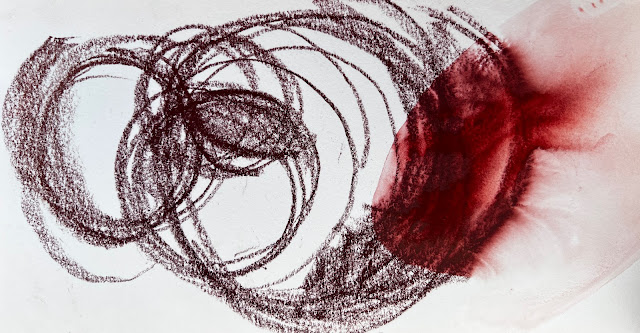Some people can enjoy the moment and do not need keepsakes as reminders of their memories. I am not one of them. I may have inherited that trait from my dad. When I first looked through my dad's memorabilia after both parents died, I thought what he left behind was evidence of a man who wanted to achieve recognition. He kept records from an early age, including awards, newspaper articles, photo albums filled with people he knew and places he traveled to, and once he received the recognition, binders full of fan letters.
As a kid, I was encouraged to keep scrapbooks (I think to keep my sister and me out of my mother's hair). The activity became a custom that I've carried in some form throughout my life. Besides the events that went into the scrapbooks up until I graduated from college, I've also kept records of what I eat each day, my weight, blood pressure readings, and several journals full of comments about books I've read. I think of one of my aunts who kept meticulous records of the weather in the middle of Minnesota. As a farming family, those records were important. I can't say the same about my own. They are a habit acquired and never really questioned. They are a moment of silence at the beginning of my day. Some people greet the sun in the morning. My habit is to write down the day and date. My way to acknowledge a new day.
Bill rediscovered a photo album of his ancestors and relatives that I had assembled many years ago from photos and papers handed down from his parents when they moved into a senior living home. Bill, unlike me, is not a saver of mementos, but he has spent time, as we sort through our things, going through this unexpected treasure as well as old yearbooks. We saved all of these things because we had the space and through inertia, but now, finding them again has given us time to reflect on our lives before we pass these treasures on to someone else.
.jpeg) |
| Inspired by a circle. A labyrinth 4 life. Wander. Wonder. Live. Life is a series of circles and spirals. By Martha Slavin |
Keeping all the pieces of a life can become a burden. On the other hand, if I hadn't kept some of the scraps of paper, letters she wrote, and her old photo albums, I would not know that my mother tried out for a movie part in Los Angeles or about her young life living in Ohio that she recorded hastily on a piece of scrap paper. Within the photo albums, I found copies of senior class pages from her yearbook. I made copies of those photos on an inkjet printer. I washed the copies with water, which allowed the ink to flow away. What I had left was a bluish-purple faded memory of each photo.
The young men in the photos would have been the right age to become part of the WWII military. I don't know their personal histories, but I used the photos as a symbol of all the lost boys who go to war. I cut a piece of Hahnemuele printing paper into long strips, scrawled some dry brushstrokes of watercolor across the surface, and glued the photos down. Throughout the book, I wrote a poem about the effects of war on each generation since WWII.
I go back and forth about keeping things. Is it a burden or an opportunity? I've come to the conclusion it is both. Most items are opportunities, but only if I can find the time to sit and think about them. Otherwise, they just become part of the stacks of our lives.
***************
Norm Eisen's parents told him:
“Your job is not to finish the work—but neither are you, the child of free people, not to do your share.”
.jpeg)
.jpeg)

.jpeg)
.jpeg)
.jpeg)


.jpeg)


.jpeg)


.jpeg)
.jpeg)
.jpeg)
%20(1).jpeg)
